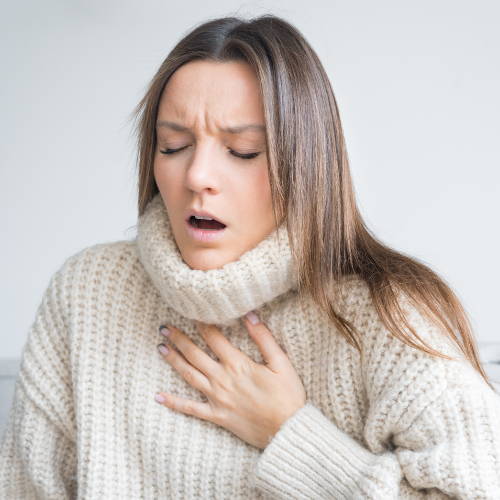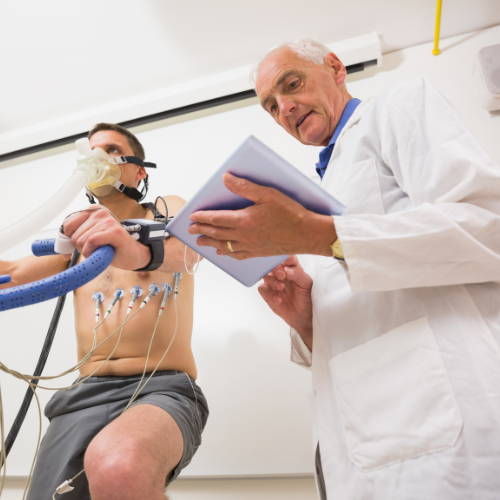
Control Craving for Cigarettes with Optimal Breathing Exercises
0 Comments
Control Craving for Cigarettes with Optimal Breathing Exercises
Did you know each cigarette you smoke shortens your life by 11 minutes? So, planning to quit smoking itself is half the battle. Now that you’re taking this big step not to let cigarettes control your life, learn how Optimal Breathing Techniques can help you win the battle against smoking and tobacco.

Smoking is injurious to health. Period. However, nearly 30.8 million Americans still smoke cigarettes. If you’re one among them, quit smoking before smoking quits you! The choice is yours, but don’t be too late.
Did you know each cigarette you smoke shortens your life by 11 minutes? So, planning to quit smoking itself is half the battle. Now that you’re taking this big step not to let cigarettes control your life, Optimal Breathing Techniques can help you win the battle against smoking and tobacco.
How Smoking Affects Your Lung Health
According to the Centers for Disease Control and Prevention (CDC), smoking accounts for 80–90% of lung cancer deaths. But do you know what smoking does to your lungs? Does your lung damage start when you take your first puff or after years of smoking a pack a day? How long does it take the lungs to recuperate once you quit smoking? Is lung damage reversible? Well, let’s figure these out.
FDA estimates that cigarette smoke contains more than 7000 chemicals, and more than 70 of those chemicals act as carcinogens. So when you inhale cigarette smoke, your lung lining gets bathed in a toxic fog, leaving a thin layer of tar on its surface, making the lungs black in color. Each puff you take is taxing your lung health.
The lung damage is permanent!
Yes, you read that right.
Smoking results in the gradual yet irreversible destruction of 500 million alveoli (the tiny air sacs) in your lungs, which extract oxygen from the inhaled air and release carbon dioxide when you exhale. As time passes, the harm inflicted upon the alveoli gets worse, and the lung tissue gradually transforms into fibrous tissue, impeding your ability to expand your lungs during inhalation. Less lung tissue and reduced expansion imply inadequate oxygenation to the vital body regions. That’s why many of us overlook the issue until we start experiencing shortness of breath.
Scared of the impact of smoking on your health?
No worries!
You’ve good news – smoking cessation, irrespective of duration and intensity of smoking, yields health benefits at any age.
Smoking Mimics Your Breathing Function
It might surprise you that smoking can imitate the body’s respiratory function so well that it almost substitutes the oxygen requirement with deadly chemicals, and breathing becomes your lost art!
When you smoke, carbon monoxide rapidly enters your bloodstream and displaces oxygen from the receptor sites of red blood cells. This leads to the synthesis of carboxyhemoglobin (carbon monoxide-hemoglobin binding), and oxygen transport is no longer possible. Inhaling cigarette smoke can provide the illusion of breathing in oxygen without actually delivering it.
Prolonged smoking can cause your body to respond to chronic oxygen deprivation by synthesizing more red blood cells in an effort to increase the amount of oxygen being transported in the bloodstream. This condition is termed smokers' polycythemia (abnormal concentration of red blood cells), which can increase the risk of heart attack or stroke.
What Happens When You Quit Smoking?
According to the American Cancer Society[4], the recovery process starts within minutes of smoking your last cigarette. After 20 minutes of quitting, your heart rate and blood pressure drop. After a few days of taking your last puff, the carbon monoxide level in your bloodstream drops to the normal level.
Your blood flow and lung function improve after 2–3 weeks of smoking cessation. Within 1–12 months, your cough and shortness of breath reduce as cilia (small hair-like structures that expel mucus out of the lungs) start to reclaim their normal function, making them more capable of handling mucus, cleansing the lungs, and reducing the infection risks. The risk of heart attack reduces dramatically within 1–2 years after being smoke-free.
After quitting smoking for 5–10 years, the risk of developing oral, throat and laryngeal cancer is reduced by half, and the risk of stroke also decreases. After 10 years, the risk of lung cancer is halved compared to that of an active smoker.
Moreover, your risk of developing bladder, esophageal, and kidney cancers is reduced. Following 15 years of abstaining from smoking, your risk of developing coronary heart disease is nearly equivalent to that of a non-smoker. These are a few of the myriad benefits of quitting smoking!
Can Optimal Breathing Techniques Help You Calm Your Cigarette Craving?
Deciding to quit smoking is one of the best resolutions you can make for your wellness. While cessation of smoking won’t be an easy-breezy task, it will be worth it. But do you find it a struggle to resist the urge to smoke even months after quitting? Know that you’re not alone!
Feeling these urges is not indicative of weakness, as the nicotine in cigarettes is as highly addictive as cocaine and heroin. Moreover, the longer you had smoked, the more challenging it becomes for your body to adjust to the absence of nicotine. But here’s the good news for you! The intensity of these cravings typically reduces as you stay smoke-free, so stay strong and never give up!
Are you ready to strike out the cigarette cravings?
Breathe Optimally and Stop Smoking!
Paying attention to your breathing rhythm enables you to shift your focus from the pesky craving and move toward a state of tranquility. You may be aware of the negative impact of smoking on your lung capacity and breathing. However, most smokers are unaware of their poor breathing habits.
The way you breathe can affect your emotions and mental state.
Natural breathing is deep, slow, effortless, and rhythmic, comprised of a relaxed inhalation, relaxed exhalation, and an effortless pause before the next inhalation. Initially, on the inhale, the stomach and lower torso expands, then the ribs, then the chest. On the exhale, your body relaxes as you deflate and empty your lungs.
Learning the right way to breathe can help you deal with your cigarette cravings by reducing stress and anxiety, promoting relaxation, and redirecting your focus away from the urge to smoke.
Optimal Breathing Techniques, especially the Smoking or Smoke Inhalation Recovery Program can assist you to quit smoking effortlessly, repair damaged lung tissue, and improve your breathing volume and capacity. This program can make your quitting process much easier by helping you to realize the power of breathing alongside psychological reinforcement and proper nutrition.
Breathing the right way is a predictor of success in smoking cessation. The best gift you can give to your lungs is oxygen, not tar. So just put it out for good–before it puts YOU out!
Sounds interesting? Learn more >>
Be On the Road to Quitting.
Optimal Breathing can get you there!

Meet Mike White
Meet Michael Grant White, the Optimal Breathing Coach and get actionable insights on your breathing development, health and longevity

How Good is Your Breathing?
Want to know the future of your health and longevity?
Most Popular Articles

April 12,2021

Feb 10, 2022

Attain satisfactory levels of exercise without aggravating existing heart.
Understand and explore EWOT - Exercise with Oxygen Therapy.
The Optimal Breathing
Self Mastery Kit
Breathing & Oxygen Articles
- Breathing
- Oxygen
- Mold Could Be in Your Home Right Now. Are You at Risk?
- Beat Work Stress the Right Way
- Bad Breathing Causes Asthma- Here's What to Do!
- Optimal Breathing, Autism & Brain Development
- Why Breathe Better? Bad Breathing Makes You sick or Sicker. Learn To Breathe Better Now
- Cure your Breathing Problems with Breathing Exercises
Meet & Work With Our Practitioners
Get personal help to improve your health
and vitality.
Get expert coaching and guidance from our Optimal Breathing experts.
Whether you are looking to have an Integral Breathwork expert, Voice Coach
or someone who specializes in anxiety or depression, look no further.





